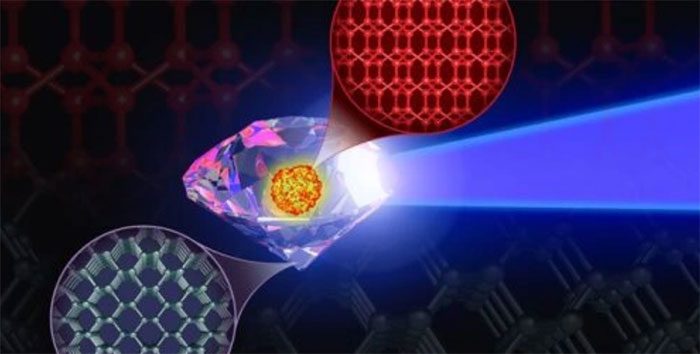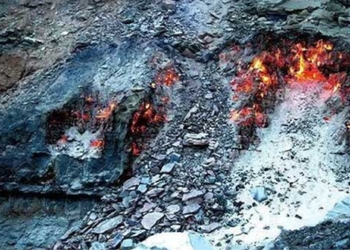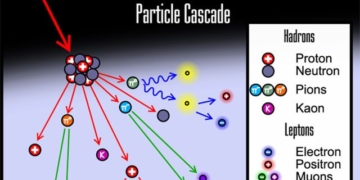Diamonds Can Be Compressed into a Material Even Harder Than Themselves, and Scientists Have Figured Out How to Achieve This.
American and Swedish physicists have utilized highly accurate quantum molecular dynamics simulations on a supercomputer to understand how diamonds react under extreme pressure and temperature conditions. They discovered the circumstances under which the carbon atoms in diamonds can be transformed into a unique structure never seen before.

Illustration of the synthetic carbon material BC8, also known as super diamond. (Photo: Mark Meamber/LLNL).
Diamonds are considered the hardest material on Earth, but the aforementioned structure, known as BC8 phase, is 30% harder than diamond. The BC8 phase has been observed in two materials: silicon and germanium. By extrapolating the properties of BC8 from these materials, scientists were able to predict how the BC8 phase would behave in carbon.
The BC8 phase does not exist on Earth but is found in the universe in high-pressure environments on exoplanets. Theoretically, this is the hardest form of carbon that can remain stable at pressures over 10 million times that of Earth’s atmospheric pressure. If it can be synthesized, we will have the opportunity to study and apply this incredibly valuable material.
Diamonds are incredibly hard due to their atomic structure. Diamonds are arranged in a tetrahedral lattice, with each carbon atom bonded tetrahedrally to its four nearest neighbors, conforming to the optimal configuration of the outer electrons of the carbon atom itself.
Physicist Jon Eggert at the Lawrence Livermore National Laboratory in the U.S. states that the BC8 structure maintains the tetrahedral shape of diamonds but lacks the cleavage planes found in diamond structures. The BC8 phase of carbon at our ambient conditions is significantly harder than diamond.
However, despite the potential existence of carbon BC8 somewhere around us, efforts to synthesize it in the laboratory have so far been unsuccessful.
A research team led by physicist Nguyễn Công Kiên at the University of South Florida has been harnessing the power of supercomputers to identify the flaws that have hindered their success.
The Frontier supercomputer at Oak Ridge National Laboratory in the U.S. is currently the fastest supercomputer in the world. Thanks to this, the research team has developed a simulation to interact with individual atoms across a range of extremely high pressure and temperature conditions. They have recreated the evolutionary process of billions of carbon atoms in harsh conditions.
Results indicate the reasons why synthesizing carbon BC8 has proven difficult. Physicist Olyenik explains, “We predict that the BC8 phase after diamond can only be achieved experimentally within a narrow range of high temperature and high pressure on the carbon phase diagram.”
In other words, there is only a specific range of high temperature and pressure in which carbon BC8 can form, and so far, experiments have not met those conditions. However, we now know what those conditions are, and with further efforts to create such environments, we may be able to synthesize carbon BC8.





















































